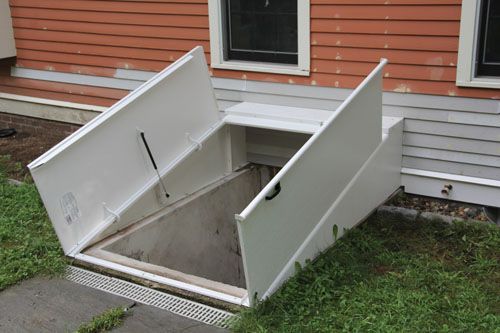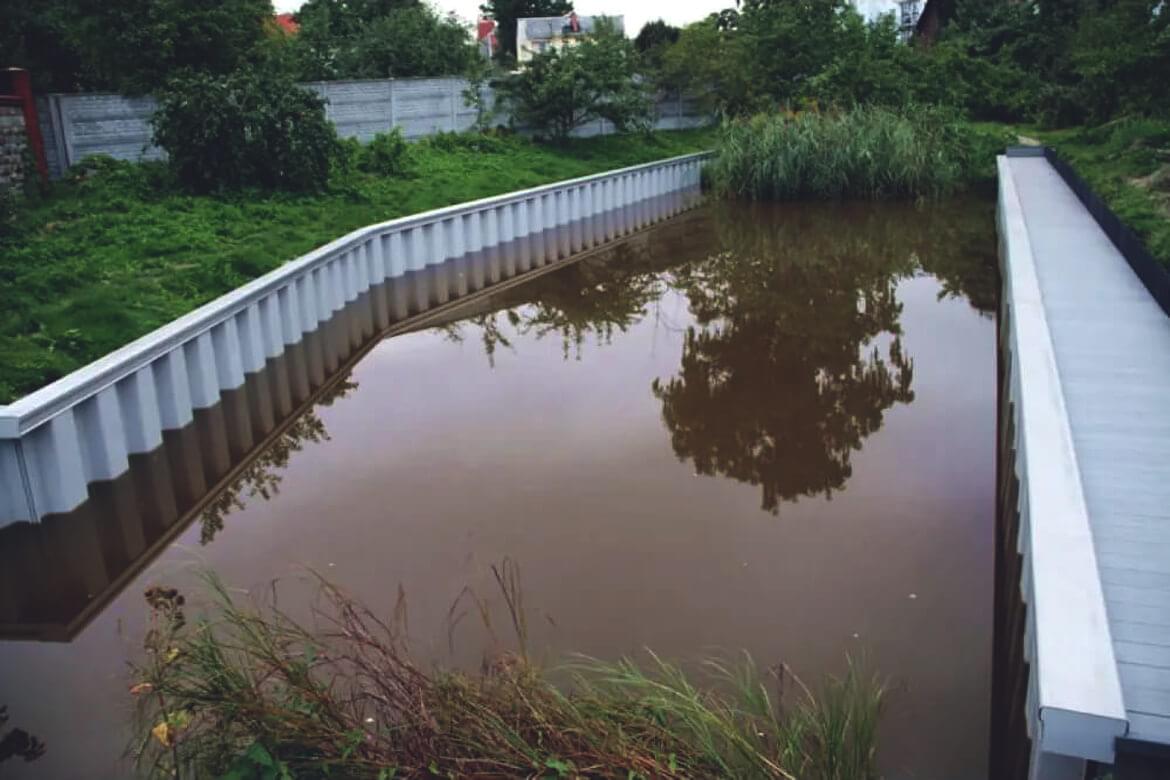Checking Out the Different Usages of Bulkhead Structures in Modern Design
Bulkhead frameworks play a considerable duty in modern style, serving both visual and functional purposes. They can define areas, boost storage remedies, and enhance lighting. In commercial settings, they act as prime focus that mirror brand name identification - Bulkhead on Lake Livingston. Additionally, their assimilation commonly supports sound management and lasting methods. Understanding the full scope of their applications discloses much regarding modern design patterns and user experience. What innovative uses bulkheads might arise in the future?
Specifying Bulkhead Structures
Bulkhead frameworks play a vital role in contemporary design, offering as crucial parts in different building styles. These structures are typically specified as elevated ceilings or systems, commonly utilized to conceal mechanical systems, wiring, or pipes. Bulkheads can be found in both property and business settings, where they give a smooth blend of capability and visual appeals. Their design can integrate lighting fixtures and other ornamental components, improving the total visual appeal of an area.
Normally constructed from products such as wood, drywall, or steel, bulkheads can be personalized to fit the building design and needs of the building (Bulkhead on Lake Livingston). They serve not only to conceal unpleasant facilities however likewise to produce specified zones within open spaces. By handling the circulation of a space, bulkheads add to the spatial company, making them a considerable element of contemporary building method. Their meaning encapsulates both functional and aesthetic dimensions.
Functional Applications in Residential Layout
Bulkhead frameworks play an important duty in household style by assisting in area optimization techniques that make the most of useful areas. They add aesthetic style components that boost the visual charm of living rooms. Furthermore, these frameworks give vital architectural assistance remedies, making sure the stability and safety and security of the home.
Space Optimization Approaches
As modern property layouts increasingly prioritize reliable use room, cutting-edge techniques emerge to take full advantage of performance without compromising aesthetic appeals. One prominent approach involves the combination of bulkhead structures, which can define locations while supplying necessary storage space remedies. These frameworks can be utilized to create upright storage space systems that boost both organization and access. In addition, multi-functional furnishings, such as collapsible tables and convertible couches, complements bulkhead designs, enabling areas to adjust to differing demands. Open floor plans additionally enhance spatial circulation, encouraging flexibility in operation. Incorporating integrated shelving and recessed lights within bulkheads also adds to a structured environment, guaranteeing that fully of room is used efficiently and harmoniously within the total layout.
Aesthetic Style Components

Architectural Assistance Solutions
In modern property design, an effective structural support solution is crucial for maintaining the honesty of areas while optimizing design and performance. Bulkhead frameworks play a significant function in this scenario, working as both support and dividing components. They can conceal mechanical systems, such as plumbing and electric circuitry, while supplying reinforcement to the ceiling and floor systems. By strategically placing bulkheads, architects can produce defined locations within open layout, enhancing functionality without endangering structural stability. In addition, these frameworks can fit illumination fixtures, adding to both aesthetics and functionality. To sum up, bulkhead structures are vital in property design, providing versatile assistance remedies that enhance both the performance and aesthetic charm of living rooms.
Enhancing Looks in Industrial Spaces
When commercial areas accept cutting-edge bulkhead structures, they not only define physical borders yet also substantially enhance the overall appearances of the environment. These building elements offer as aesthetic centerpieces, drawing focus and creating a feeling of intrigue. By integrating diverse materials such as glass, steel, or wood, bulkheads can show a brand name's identification and goal, adding to a cohesive style.
The calculated placement of bulkheads can control light and darkness, including depth and measurement to otherwise level spaces. This interplay can change a business area right into an inviting environment, motivating client engagement. Furthermore, making use of color and texture in bulkhead style can stimulate specific emotions, enhancing the total client experience. Inevitably, the thoughtful assimilation of bulkhead structures boosts the visual allure of commercial areas, making them not only useful yet also aesthetically enchanting, therefore fostering a long lasting impression on visitors.
Acoustic Performance and Noise Administration
Reliable acoustic efficiency plays a vital function in modern style, specifically within business rooms where sound administration is crucial. Bulkhead frameworks can greatly boost acoustic qualities by taking in sound, decreasing echo, and mitigating noise transfer in between locations. These attributes are especially valuable in atmospheres such as offices, movie theaters, and dining establishments, where clear communication and a pleasant acoustic experience are critical.
The strategic positioning and layout of bulkheads can aid develop sound-buffer areas, efficiently isolating noisy areas from quieter ones. Products utilized in bulkhead construction, such as acoustic panels and soft finishes, contribute to their sound-dampening capacities. Furthermore, the consolidation of bulkheads enables the combination of sound-absorbing elements without compromising aesthetic charm. By resolving acoustic performance, designers can create harmonious settings that improve comfort, enhance individual experience, and advertise productivity, making bulkheads an important component in the style of contemporary industrial areas.
Integrating Bulkheads for Reliable Room Application
Often forgotten, the assimilation of bulkheads in architectural layout can significantly enhance area application in modern-day buildings. These architectural components offer numerous useful objectives, providing a means to hide mechanical systems, electrical wiring, and plumbing without compromising aesthetics. By purposefully positioning bulkheads, designers can develop defined locations within open floor strategies, therefore facilitating much better company and flow.
Additionally, bulkheads can include storage space solutions and lights functions, maximizing the functionality of or else lost upright space. In household setups, they might mark zones such as kitchens or living areas, while in industrial areas, they can improve the performance of layouts by plainly marking pathways and workspace.
Ultimately, the thoughtful integration of bulkheads contributes to an extra aesthetically appealing and well organized environment, permitting adaptable spaces that can evolve with the requirements of their occupants. This technique not only enhances space however additionally promotes a much more harmonious communication between form and feature.
Bulkheads in Public Style

Building Aesthetic Enhancements
While several architectural components go for functionality, go to my site bulkheads in public style offer a dual purpose by boosting aesthetic allure. These frameworks typically create visual rate of interest through their design, incorporating flawlessly with bordering components. By employing different products, structures, and shades, bulkheads can add to a special identification for public spaces, such as airports, museums, and collections. Their critical positioning aids to mark areas, assisting visitors while adding deepness to the total layout. Furthermore, bulkheads can highlight lighting, developing dynamic ambiences that change throughout the day. This aesthetic improvement not only raises the visitor experience yet additionally cultivates a local color, making bulkheads a necessary consideration in modern-day public design. In general, bulkheads symbolize the fusion of kind and function.

Architectural Support Solutions
As designers look for innovative ways to boost the structural integrity of public spaces, bulkheads arise as crucial components in the style and building and construction procedure. These structures provide important support, especially in areas based on heavy foot website traffic or vibrant loads. By dispersing weight Learn More evenly, bulkheads aid avoid structural failing while permitting versatile design options. In large places, such as stadiums and convention facilities, bulkheads are commonly integrated right into the general architectural framework, guaranteeing stability and safety. Additionally, they can facilitate the unification of utilities and mechanical systems, adding to the efficiency of area use. Ultimately, bulkheads represent a vital option in modern public design, reinforcing both capability and safety and security in community-focused environments.
Environmental Security Steps
Integrating ecological security steps into public design has actually ended up being progressively crucial as urban designers prioritize sustainability alongside architectural support. Bulkhead structures offer a dual purpose in this regard, acting as barriers against disintegration and flooding while at the same time enhancing the aesthetic allure of urban landscapes. Their design commonly consists of natural environments such as plant life, which can enhance air quality and provide environments for wild animals. Furthermore, bulkheads can be crafted with permeable materials that enable water absorption, decreasing overflow and advertising groundwater recharge. This combination of eco-friendly factors to consider not just protects the setting yet likewise fosters community strength against environment modification. By using bulkheads successfully, designers add to sustainable urban development that straightens with contemporary ecological objectives.
Future Fads in Bulkhead Design
Emerging patterns in bulkhead style mirror an expanding focus on sustainability, development, and capability in contemporary design. Developers are significantly integrating green products, such as recycled compounds and bioplastics, to minimize environmental influence. On top of that, the assimilation of clever modern technology is ending up being common, enabling bulkheads to offer multi-functional functions, consisting of power storage space and environment control.
In urban settings, modular bulkhead systems are obtaining traction, offering versatility in style and convenience of installation. These systems can be adapted to numerous landscapes, permitting efficient room usage. Additionally, visual considerations are evolving; bulkheads are currently being made to improve visual allure, frequently integrating artistic components that reverberate with regional society.
As climate durability becomes a concern, future bulkhead designs will likely focus on flood protection and stormwater administration, ensuring structural integrity while addressing environmental challenges. This shift indicates an all natural method to design that fulfills both environmental obligations and human needs.
Often Asked Concerns
What Materials Are Frequently Used for Bulkhead Construction?
Common materials for bulkhead building consist of concrete, steel, hardwood, and composite materials. These alternatives offer toughness, structural integrity, and resistance to ecological elements, making them appropriate for different applications in construction and engineering jobs.
Just How Do Bulkheads Influence Structure Energy Efficiency?
Bulkheads boost constructing energy effectiveness by supplying thermal insulation and minimizing air leak (Bulkhead on Lake Livingston). They assist preserve interior temperature levels, thereby reducing heating and cooling needs, ultimately resulting in reduced energy prices and improved ecological sustainability
Are There Any Kind Of Building Codes Details to Bulkhead Structures?
Yes, constructing codes particular to bulkhead frameworks exist, differing by location. These policies normally attend to safety, structural honesty, and accessibility, ensuring that bulkheads satisfy needed requirements for building and style within a given jurisdiction.
Can Bulkheads Be Easily Changed or Gotten Rid Of Later On?
Bulkheads can commonly be modified or removed, depending on their layout and building. Such modifications might require mindful planning and adherence to structure codes to ensure architectural honesty and safety and security are kept throughout the procedure.
What Are the Expenses Connected With Setting Up Bulkhead Structures?
The prices connected with setting up bulkhead structures can differ substantially, commonly influenced by materials, style complexity, and labor. Normally, expenses range from moderate to high, depending on the project's particular requirements and location.
Bulkhead frameworks play a crucial duty in modern design, serving as important elements in numerous building designs. Bulkhead structures play a necessary role Click Here in property style by promoting space optimization techniques that take full advantage of useful locations. Frequently neglected, the combination of bulkheads in building style can considerably boost room use in contemporary buildings. As architects look for cutting-edge methods to boost the architectural stability of public rooms, bulkheads arise as crucial components in the style and building procedure. The prices associated with mounting bulkhead structures can differ substantially, generally influenced by materials, design intricacy, and labor.